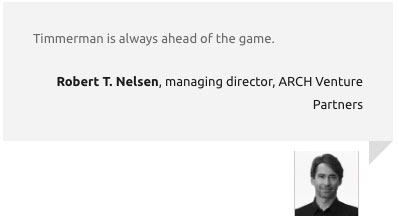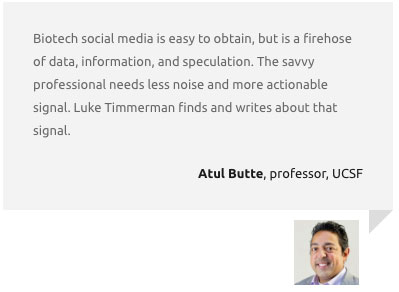Coastal Culture Clash Around AI in Biotech

David Shaywitz
“Does the crowd understand?
Is it East versus West
Or man against man?
Can any nation stand alone?”
Burning Heart, by Survivor – Rocky IV
In national politics, the culture wars may pit the coasts against the rest of the country. In biotech, however, the AI culture war seems to pit the coasts against each other.
Consider this recent LinkedIn post by Chandana Haque, Executive Director of Recursion Pharmaceutical’s startup incubator, Altitude Labs (because they’re based in the mountains of Utah – get it?)
After back-to-back trips to Boston and SF this month, I’m reflecting on some key impressions about the differences between the coasts—especially when it comes to trends in early-stage biotech investing. 🚀
Where did Boston investors get excited? Core biotech: engineering cell machinery, new modalities, and regenerative medicine. This is their strength, and they know it well. But bring up machine learning, and you’ll see a shift; ML just isn’t on the radar for most of New England’s investment crowd, which sticks closely to traditional biotech.
In SF, it’s a different story. AI/ML is seen as critical to understanding complex biology, and it’s almost assumed that every startup will evaluate how ML fits into their approach. SF investors are also intrigued by ADCs, structural biology, and even spatial biology—areas where I found Boston often disengages. The West Coast’s interdisciplinary approach, mixing tech and bio, seems ingrained.
Time will tell how each approach shapes the field, but if you’re traveling coast-to-coast, you’ll feel the difference. What are you seeing?
In short, in the Bay Area, AI is what’s captivating everyone. This passion inevitably finds expression in the contemplation of biotechnology.

Chandana Haque
The attitude in Boston is, for the most part, rather more reserved. While there are obviously high-profile exceptions, including investors like Flagship Pioneering (which has embraced AI as tightly as any Bay Area fund), and young companies like nference, on balance I think Haque is spot on.
At a recent Boston area healthcare conference (which I can only discuss in general terms because it was held under Chatham House rules), I was struck by the code-switching I observed on a venture panel where a prominent West Coast investor at a firm championing the transformative potential of AI offered a conspicuously understated perspective.
It was not so much the substance but rather the emphasis and affect that was different from what I’ve heard him say in other contexts. Here, speaking to somewhat buttoned-up East Coast business audience, his tone was more guarded, his perspective more grounded, and the changes he foresaw more gradual.
It’s also possible that in California, even VCs focused on biotech are bankrolled by limited partners who are captivated by the promise of technology and are drawn to VCs and startups that speak the language of radical transformation.
In Boston, the focus tends to be different – not least because of the overwhelming presence in Boston of biologists, physicians and other life science experts whose lived experience has reminded them (as it has reminded me) of the staggering complexity of biology and messiness and inherent humanity of medicine.
Exhibit A for East Coast early-stage biotech investors (as it has been for many previous years) is the latest iteration of Atlas Venture’s annual Year In Review (watch it here), presented by Bruce Booth, summarizing the state of the biotech industry and ecosystem.

Bruce Booth, partner, Atlas Venture
As in previous years, the entire presentation should be required viewing for everyone in the life sciences.
Booth doesn’t spend all that much time on AI, but he calls it out as an area with “great investor interest.” The challenge, he says, is that because of the “incredible amount of buzz and hype” in this space, it’s been “difficult to figure out where the reality is.”
He points out that in 2014, “Recursion said they wanted 100 clinical programs in 10 years” (an aim that I imagine struck tech investors as admirably bold and biotech investors as hopelessly naïve).
“Unfortunately,” Booth deadpans, “they missed that,” achieving only five clinical programs.
Yet even that represents an important achievement, Booth says, pointing out that “any biotech company that’s just ten years old that has five drugs in the clinic is actually incredibly productive.”
Booth believes AI isn’t just wispy and aspirational. “The reality is there,” he asserts. “AI and machine learning will have targeted impacts up and down the R&D process.”
Preclinical examples he cites include the use of AlphaFold to predict protein structure, and the potential of AI “to predict toxicities or create better routes for manufacturing drugs.”
On the development side of R&D, he suggests AI may contribute to patient selection and enrollment in clinical trials. Moreover, given the established capabilities of large language models, he thinks AI is also likely to provide assistance with regulatory documentation and writing.
But he struggles to find what might be termed West Coast conviction:
“Fundamentally, in the drug R&D space, given the complexity of human biology and the lack of massive datasets, we think that the impact of AI machine learning on R&D is going to be more likely around evolution than revolution. We’re not going to see drug discovery go from a multiyear process to just weeks or days.”
Consequently, Atlas plans to continue its existing (and, Booth says, proven) strategy of leveraging cutting-edge biomedical science to generate promising novel therapeutics. If AI contributes to the development of a promising target or approach, they’re all for it, but they’re not looking to AI itself as the basis for a platform, nor do they see AI as the transformative unlock for biomedical discovery.
The Atlas view, perhaps not surprisingly, also represents the mindset of most senior pharma R&D executives that I’ve met.
Yet, this skepticism may start to evolve if — or I suspect, when — AI’s impact is more palpably felt. 
As I discussed in my last column, young physicians have quickly embraced an AI clinical app to help guide them through care of individual patients. This should serve as a reminder that while steps enabling change may be imperceptibly small, when change finally comes, it can be rapid. Before long, even big pharmas may find themselves persuaded to embrace their inner Californian.
Meanwhile, leading AI-first biotech companies seem to have become more aware of the essential expertise and implicit knowledge across a range of capabilities that veteran drug developers have accrued and are increasingly recognizing the importance of tapping into this vital experience, found in such abundance along the Charles River.
Perhaps, the next great biotech successfully integrating the approaches represented by the coasts will arise somewhere in the middle.
“If I can change,
And you change,
Everybody can change.”





